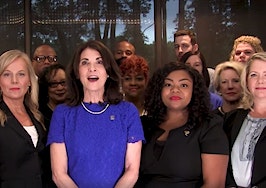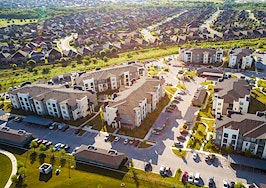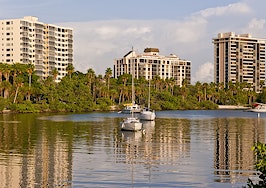This is the eighth installment in Inman’s “12 in ’21” hot neighborhoods series, which explores areas with both booming real estate markets and dense amenities. To read previous stories in the series, click here.
Way back in the mid 1800s, fashionable residents of Atlanta, Georgia, would ride down out of the city to a nearby beech grove. There, they’d enjoy the cool waters of a natural spring that bubbled up out of the ground. Eventually, a local doctor dubbed the spot the Ponce de Leon Springs after the famous Spanish explorer who supposedly searched for the Fountain of Youth.
Today, that natural spring is long gone, a victim of a century and a half of urban development. But the spring’s name survives in the form of Ponce de Leon Avenue — a major thoroughfare in the city — and the location continues to anchor one of Atlanta’s most dynamic and interesting neighborhoods: The Old Fourth Ward.
The Old Fourth Ward — or O4W — is a neighborhood filled with converted industrial buildings, walking and biking trails, and mom-and-pop businesses. It’s steeped in history, well-located and one of the hottest neighborhoods in one of America’s ascendent cities.

Chris Lazarus
And Atlanta has indeed been ascendent lately. Chris Lazarus — who co-owns Sellect Realty — told Inman the city has seen a wave of people relocating from more expensive metro areas, which has driven up prices and put Atlanta on the leading edge of today’s real estate trends.
“We are way ahead of what’s happening on the national level,” he added. “When we talk inventory on the market, were at an all time low.”
That flurry of activity has impacted most of Atlanta’s neighborhoods, including the Old Fourth Ward. To get a sense of what makes the area so unique, Inman collected data on the neighborhood’s housing and spoke with a handful of local real estate professionals. Here’s the takeaway.
What is the Old Fourth Ward?
The Old Fourth Ward sits adjacent to downtown Atlanta. It’s bound on the north by Ponce de Leon Avenue, and on the other sides by other buzzy and well-located neighborhoods such as Inman Park.
Historically, the Old Fourth Ward was a predominately Black neighborhood. Julian Jackson, an eXp Realty agent in Atlanta, told Inman that like many other Black neighborhoods, the Old Fourth Ward was redlined in the mid 20th century. That meant banks, real estate companies, insurers and others identified the area as a place where they were less willing to do business, and where among other things they would charge higher rates due to the area’s racial composition. Jackson noted that the discriminatory redlining even extended to the street grid, which was modified to limit the Old Fourth Ward’s connections to surrounding neighborhoods, many of which were more affluent.
Despite these challenges, a Black community thrived in the Old Fourth Ward and the area’s biggest claim to fame is that it was the birthplace and childhood home of Martin Luther King, Jr.
Today, King’s boyhood home and the church where he and his father served as pastors are part of a historical park.
However, despite that history, Jackson said decades of discrimination and disinvestment eventually took their toll on the Old Fourth Ward and through the early 2000s the area suffered from high levels of crime.

Julian Jackson
“The residents were telling other residents not even to drive through the neighborhood,” Jackson said.
That began to change between 10 and 15 years ago. Jackson explained that the addition of new amenities such as the Beltline walking trail (more on that below) have led to significant gentrification of the Old Fourth Ward, and over the last decade or so the area has proven attractive to real estate developers as well.
That process produced growing pains, and Jackson said he personally knows people who moved away because the neighborhood became too expensive. As is typically the case with gentrification, the neighborhood’s changes have been particularly hard on some longer term residents.
But despite those challenges, Jackson overall characterized the Old Fourth Ward’s evolution in recent years as a net positive because things like crime levels have gone down.
“I would definitely say it’s progress,” he added.
Aside from gentrification, the Old Fourth Ward is notable for a number of other reasons as well. Céline Higgins Lazarus, an Atlanta native and co-owner of Sellect Realty with her husband Chris, told Inman the neighborhood’s name comes from a previous system in which all of Atlanta was divided up into geographic political areas known as “wards.” Atlanta abandoned the ward system in the mid twentieth century and most of the rest of the city eventually discarded the names that went with it. The Old Fourth Ward — which is a subsection of the original Fourth Ward — was the holdout and kept its name.

Céline Higgins Lazarus
Lazarus went on to say that Inman Park, to the southeast, was “the first suburban neighborhood.” Sandwiched between the downtown and the city’s first suburb, the Old Fourth Ward was for many years zoned to have a number of industrial areas. To this day, it still retains many old warehouse buildings and other examples of adaptive reuse. The most prominent of these is Ponce City Market, which opened in 2014 in a vast former Sears building. The project today includes apartments, office space, a food hall and other retail.
“It’s going through a revitalization,” Lazarus added while discussing the neighborhood’s industrial past.
U.S. Census data indicates that today the population of the Old Fourth Ward sits at just over 11,600 people, which is a year-over-year increase of about 7 percent. There are just over 6,600 households in the neighborhood. The median age in the area is 33, while the median household income is $63,768 per year.
Old Fourth Ward real estate

The Old Fourth Ward spans two ZIP codes, 30308 and 30312. Data from Redfin shows that as of May 2021, homes in 30308 had a median sales price of $330,000, up 4.8 percent year-over-year. Homes in 30312 had a median sales price of $395,000, up nearly 18 percent year-over-year.
Both ZIP codes have seen massive price growth over the last decade; in May 2012, homes in 30312 were selling for a median price of just $76,000 and homes in 30308 were selling for $132,000, according to Redfin’s data.
Randy Carroll — an Atlanta native and manager at CRM maker Chime — has watched this process play out first hand. Carroll old Inman that he lived in the Old Fourth Ward for several years during the past decade. Though he rented — and in a sign of the times the rent on his unit nearly doubled when he moved out — he said he knows people who bought homes in the area years ago for around $70,000 and then more recently sold those properties for something in the neighborhood of $700,000.

Randy Carroll
“It’s definitely a great area,” Carroll added.
May of this year saw 214 homes sell in 30308, which is up a whopping 135.2 percent year-over-year. In 30312, 169 homes sold in May, which represents an increase of 44.4 percent compared to the same period in 2020.
As is the case in much of the U.S., both ZIP codes have seen plunging supply, with Redfin’s data showing a 42.6 percent year-over-year decline in inventory in May in the 30312 zip code. In the 30308, inventory was down 33.6 percent in May 2021 compared to the same period last year.
As of July 16, Redfin showed 71 homes for sale in the Old Fourth Ward. The cheapest was a two-bedroom condo asking $183,000. The most expensive was a sprawling, modern single family home with a list price of $1.3 million. Redfin showed a total of six homes with asking prices at or above $1 million as of July 16.
Zillow also provided Inman with data. In Zillow’s case, the company tracks a unique figure it calls the Zillow Home Value Index (ZHVI), which is meant to capture the typical value of a home in a particular area. Zillow’s ZHVI in May 2021 was $296,483 for the 30308 zip code and $405,960 for 30312.

Sarah Mercer Chatel
Sarah Mercer Chatel, who leads the Chatel Group at Keller Williams, told Inman that the housing stock in the Old Fourth Ward is a mix of single family homes, old industrial buildings that have been converted to livable space, and new construction.
“There are old schools and you’re finding really cool industrial looking contemporary new construction going in,” Chatel said. “You used to not be able to give away contemporary anything. But now, because we’re getting these relocating people here who have a more diverse appetites, new and contemporary are selling like hot cakes.”
Chatel went on to say that the neighborhood has tended to appeal to people under 35 years old, as well as those older than 55. However, in recent years a number of younger families have also gravitated to the Old Fourth Ward. And she said that while there are some signs of a cooler market in the area, “if you list your property, it’s going to sell like hot cakes in that neighborhood.”

Ponce City Market is one of a number of adaptive reuse projects that has added housing to existing buildings in the Old Fourth Ward. Credit: Ronny Sison and Unsplash
Carroll also said that excluding new construction and adaptive reuse, the existing single-family homes in the neighborhood tend to be older and were built in the first half of the twentieth century.
While the numbers indicate that the market in the Old Fourth Ward remains strong, a Zillow spokesperson told Inman that housing in its ZIP codes does appear to “have lower demand than most of the rest of the country.” That assessment was based on lower ZHVI and comparably higher levels of inventory, among other things.
That conclusion supports the hypothesis — shared widely during the coronavirus pandemic — that consumers have gravitated to more suburban locations, rather than the comparatively more urban setting that the Old Fourth Ward epitomizes. The upside, though, is that for buyers the neighborhood may be slightly less competitive than other parts of Atlanta.
Old Fourth Ward rents

As is the case with home sales, Zillow looks at rents using a unique figure called the Zillow Observed Rent Index (ZORI). The idea is to capture a “typical” rent in the area, and as of June 1 the ZORI for 30308 was just over $1,770. That represents an increase of about 5.4 percent year-over-year. It’s also up nearly 23 percent since the beginning of 2016, when Zillow’s data begins.
In 30312, the typical rent as of June 1 was just over $1896, according to Zillow, which is a jump of nearly 12 percent compared to the same period in 2020. Since the beginning of 2016, rent in 30312 has climbed more than 39 percent.
Carroll described the Old Fourth Ward as a blend of homeowners and renters. And he noted that much of Atlanta’s luxury developments have gone into the nearby Midtown area — meaning the Old Fourth Ward doesn’t have as many examples of the city’s priciest new construction.
As of mid July, Zillow’s rental listings showed that there were 32 units available to rent in the Old Fourth Ward. The most expensive units were located in a modern, loft-style building and were asking just over $3,700 for two bedrooms. Prices for one-bedroom units in the same building ranged between $2,000 and $2,600 a month.
The least expensive rental as of mid July was located in a 1940s building, though the unit itself was recently renovated, according to the listing. The unit had one bedroom and was asking just over $1,000 a month.
The Google Street View above shows what a typical single family street in the neighborhood looks like. While most of the available rentals in the Old Fourth Ward are located in large, multifamily buildings, there are several single-family units in the neighborhood as well. They include a three-bedroom house asking $2,500 a month. The listing for the house touts its “amazing” location in the Old Fourth Ward, which it describes as “Atlanta’s fastest growing neighborhood.”
Old Fourth Ward amenities

While most of the neighborhoods featured in Inman’s hot neighborhood series have been rich in amenities, the Old Fourth Ward is in a league of its own. The jewel of the area is the Beltline, a paved walking and biking trail that opened in 2005. The trail occupies the space of a former rail line, and every person who spoke with Inman for this story mentioned it as one of Atlanta’s most cherished amenities.
“It’s incredibly popular,” Carroll said. “People in Atlanta will call friends and say, “it’s Saturday afternoon, let’s go to the Beltline. It’s a really highly desirable area.”
The Beltline also helped improve the Old Fourth Ward’s lack of access to other parts of the city, which was a problem dating back to the days of explicit redlining.
“Now, because of the connectively of the Beltline, it’s easier to get from one neighborhood to another,” Jackson said, adding that today million-dollar homes line the popular trail. “It’s like beach-front property.”
The Beltline has also spurred other development. Chatel said that after the project opened “all these little venues started popping up” in the area. Today, the surrounding area is filled with brew pubs, restaurants, bars and other amenities.
“There are no chain restaurants,” Chatel added. “The coffee shops are locally owned. It has a very eclectic, artsy, SoHo feel. But SoHo in the ’80s and ’90s.”

A floating bridge on a pond in the Old Fourth Ward Historic Park. Credit: graphiknation and Getty Images
Some of those amenities draw people from the surrounding city. Carroll pointed to a bar called Lady Bird, saying the establishment is one of the most popular of its kind in all of Atlanta. Other popular destinations in the area include Lingering Shade, a bar, and Two Urban Licks, a restaurant. The Old Fourth Ward is also home to Eats, a hole-in-the-wall southern comfort food restaurant that is one of this reporter’s favorite eateries in the world.

Eats may not look like much, but the restaurant is among many in the neighborhood that feature jaw-droppingly good food. Credit: Jim Dalrymple II
Beyond food and drinks, the Old Fourth Ward is home to a vibrant arts scene and Carroll said large walls throughout the area are filled with huge, commissioned paintings.
“It’s got beautiful artwork throughout the area,” he noted.
Overall, Walk Score — which ranks areas based on how easy it is to walk to their amenities — gives the Old Fourth Ward a 79 out of 100, meaning it is “very walkable.” Meanwhile Atlanta as a whole only has a score of 49, with Walk Score describing the city as “car-dependent.”
Walk Score also describes the Old Fourth Ward as “very bikeable.”
Old Fourth Ward buzz

The Old Fourth Ward routinely lands on lists of Atlanta’s hippest and more desirable neighborhoods.
In April, for example, the Culture Trip said the area had a “sizzling global food scene” and “brownstones that rival those in Manhattan.”
Also in April, travel website Trip 101 called out the neighborhood for its popular “nightlife scene” and for an abundance of local shops and eateries.
Unsurprisingly given that praise, the Old Fourth Ward frequently appears in Eater, a publication that highlights buzzy restaurants.
And the real estate and housing development in the area often garners the attention of both the local press and dedicated development outlets such as Urbanize.

Sculptures along the Beltline. Credit: Robert Neff and Creative Commons
U.S. News and World Report also recently named Atlanta as one of the best places to live in the U.S. (the city landed at number 55 on the list), and in the publication’s write up the Old Fourth Ward was the only neighborhood to get a specific shout out.
“Among the nation’s fastest-growing metro areas for years, the Georgia capital is attracting newcomers from around the country, and people are looking to this part of the country for culture and commerce,” U.S. News wrote. “If you learn about everything Atlanta has to offer, it’s easy to see why.”









